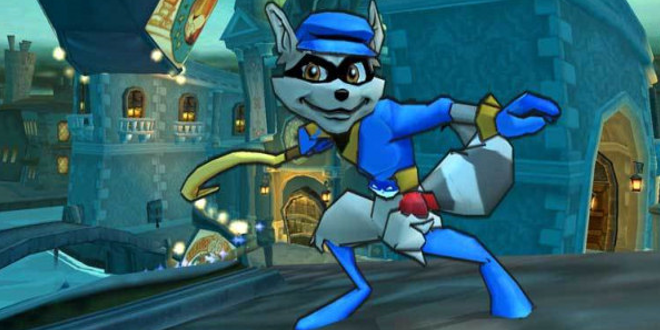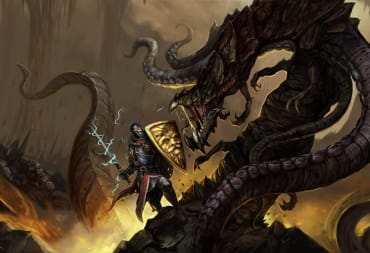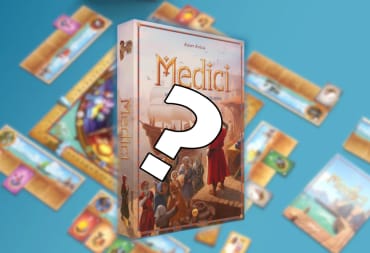Has anyone ever regretted the fact that there are games out there that you know by reputation, but never played? One of the opportunities for this review is to remedy that on a game I at first rejected in my youth because I felt I was too old for it. The colorful, cartoon world, the platforming, it felt childish to a then 16 year old, who felt the mark of maturity was to play games against the child-like exterior in favor of something more adult.
The game in question is Sly Cooper and the Thievius Raccoonus. Often paired with Jak and Daxter and Ratchet and Clank, Sly Cooper has, until recently, been the black sheep of the this trio, being confined solely to the Playstation 2, until the HD remaster of the three games a few years ago, and Sly Cooper: Thieves in Time for the Playstation 3.
Developed by Sucker Punch, Sly Cooper follows the titular raccoon as a cartoon Robin Hood, along with his motley crew of anthropomorphic merry men, Bentley and Murray, as they attempt to steal back pages from the Thievius Raccoonus, a book containing the secrets of Sly Cooper’s master thief ancestors. The game itself is known for its clever characters, gorgeous presentation, and varied gameplay, all of which made Sly Cooper, ironically enough, a minor cult hit at first. Unlike the aforementioned Jak and Daxter and Ratchet and Clank, Sly Cooper had poor sales comparatively on the outset, although it was able to secure a spot on the Playsation 2 “Greatest Hits” line. Still, it was overshadowed for a time, despite being a solid, and arguably better, game than the other two.
One of the unique aspects about Sly Cooper is how it goes old school in terms of its stealth and platforming. Shunning the open-world style of platforming games at the time, the game is broken up into several chapters, each with a number of linear levels that offer unique platforming challenges or some minigames to play. This gives Sly Cooper some variety, despite only having five chapters in the whole game.
It also allowed Sly Cooper to maintain a coherent plot. It is admittedly bare bones in terms of a story—a gentleman thief recovering a lost family heirloom—but in the long tradition of noble thieves, Sly stands tall with the likes of Lupin III and A. J Raffles. What wins Sly over is his dry wit, he is charming without feeling forced, and thoroughly enjoys the challenges presented to him throughout the game, much to the exasperation of his partner Bentley.
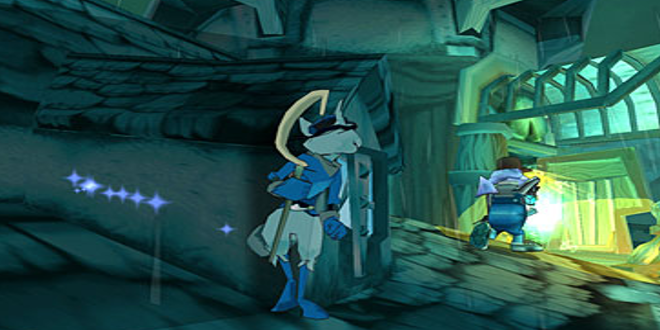
Upon first glance, Sly Cooper is a gorgeous game to behold, sporting cel-shaded graphics in a dark filter, known as “Toon Shading” by Brian Fleming of Sucker Punch. It is and exaggerated world, but a believable one in a way that rivals animated films in terms of smoothness of visuals. Sound design is also top of the line, with cartoon sound effects and music cues that “mickey mouse” the action around you. The voice cast is also very strong, in particular Kevin Miller as the titular Sly Cooper.
The gameplay of Sly Cooper, however, is where the title truly shines. Primarily a platforming game with a heavy emphasis on stealth over action, most of the game has the player attempting to solve level puzzles and challenging their timing over their ability to fight. With the notable exception of some boss battles and odd enemy placement, it is possible to play through some levels of Sly Cooper without engaging in direct combat, a testament to the level design of Sucker Punch.
At your disposal are most of the tools you would expect from a platforming game. Sly can run, jump, climb certain walls, sneak and attack enemies. As the game progresses, Sly gains new abilities to use against foes and the environment. An automatic platforming jump, for example, allows Sly to hit narrow gaps that would otherwise be impossible to land on. Each level has the possibility of Sly gaining new moves, provided he is able to collect enough hidden clues to unlock safes. Not all the moves will be worthwhile though; techniques such as exploding hats or a decoy Sly rarely, if at all, need to be used during the game, but the variety is there for players to experiment on.
Another plus the game has is the lack of too many collectibles that often plague other platforming games. Once again, Sucker Punch focused on the challenge of the level design instead of a menial scavenger hunt, leaving the few collectibles in the game not impossible to achieve on a given level. Since each level in Sly Cooper is linear, missing a collectible is not the end of the world, as you can revisit levels at your leisure to get what you want. The only issue in the end would be the camera, which is adequate in Sly Cooper, but not perfect, requiring constant adjusting at times to hit more difficult spots throughout the game.
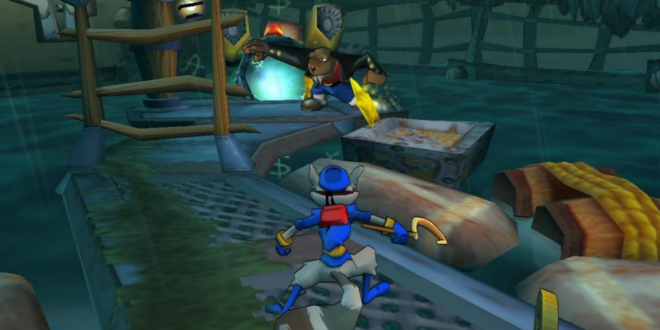
There are some levels that are definitely frustrating though, mainly because they deviate too heavily from the well-designed platforming experience. These levels resemble shoot em ups, track races, and other mini-games that feel out of place. Thankfully they are incredibly short and only appear around twice a chapter, but if there was one weak link in the design of Sly Cooper, it is how poor these levels are compared to the amazing platforming levels.
Actually, there is another flaw in Sly Cooper, and that is how short the game really is. A 100% playthrough can take about 10 hours to complete, making Sly Cooper a very quick experience for those well-versed in platforming games. Sly Cooper is also only challenging to a point; because of the level design, there is a lack of trial and error platforming in the game, meaning patterns are easily recognizable and rarely rely on timing or skill to get down correctly. In fact, most of the game's challenge comes from the fact that Sly Cooper is a one-hit kill game, which extends play time if players are too careless in particularly tougher levels.
This makes Sly Cooper a fun, but quick experience. Echoing reviews from 2002, many criticized the length of Sly Cooper as the game's major law, although this is less of an issue thirteen years later due to the abundance of Sly Cooper games out there now. Still, for 2002, the length of Sly Cooper was noticeably shorter compared to other games in the genre.
Even though, it is hard not to recommend Sly Cooper And the Thievius Raccoonus to players. A stylish effort that, despite some flaws, still holds up as a great game to play. I know I regret skipping out on Sly Cooper in the past, perhaps now the HD collection on the Playsation 3, and even a motion picture featuring the character coming out in a year, will entice others who may have brushed it off to play it as well.
The game was played to completion on the PlayStation 2 for a total of 13 hours.
Review Summary
A solid platforming experience, Sly Cooper and the Thievius Raccoonus is a fun, if short experience with only a few flaws to really worry about.
(Review Policy)Have a tip, or want to point out something we missed? Leave a Comment or e-mail us at tips@techraptor.net
